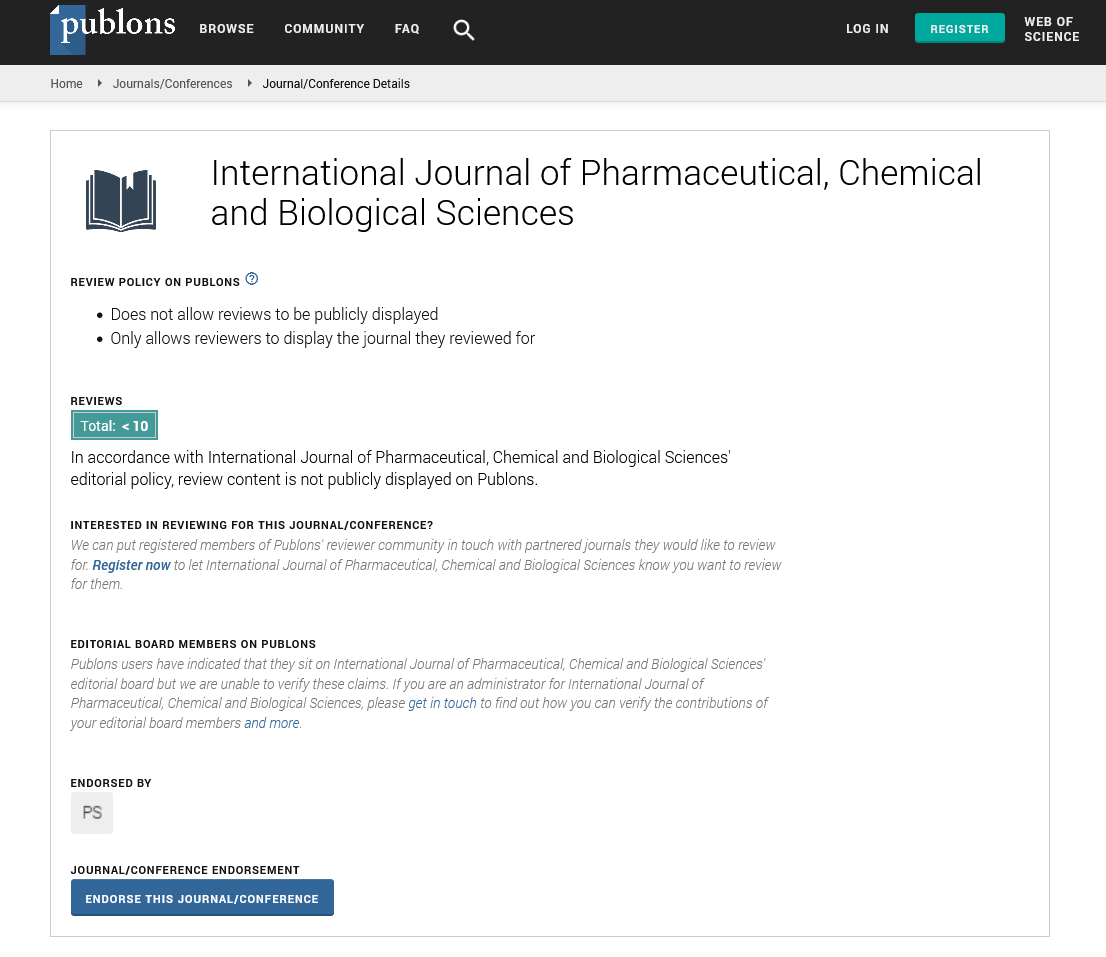Short Communication - International Journal of Pharmaceutical, Chemical and Biological Sciences ( 2023) Volume 13, Issue 3
Tissue Culture: Growing the Future of Agriculture and Medicine
Kimbell Cho*Kimbell Cho, Department of Agronomy, Henan Agricultural University, China,
Received: 30-Aug-2023, Manuscript No. ijpcbs-23-113676; Editor assigned: 01-Sep-2023, Pre QC No. ijpcbs-23-113676 (PQ); Reviewed: 15-Sep-2023, QC No. ijpcbs-23-113676; Revised: 20-Sep-2023, Manuscript No. ijpcbs-23-113676 (R); Published: 27-Sep-2023, DOI: DOI: 10.36648/2471-9668-13.3.6
Abstract
Introduction
Tissue culture, also known as micro propagation or in vitro culture, is a remarkable branch of biotechnology that has revolutionized the way we grow plants and study cells. It involves the aseptic culture of plant or animal cells, tissues, or organs in a nutrient medium under controlled environmental conditions. This technique has applications ranging from agriculture and horticulture to pharmaceuticals and medical research. In this article, we will embark on a journey into the fascinating world of tissue culture, exploring its history, techniques, applications, and the potential it holds for the future. Tissue culture as we know it today has its roots in the late 19th century, when scientists began experimenting with the cultivation of isolated plant cells. The first successful plant tissue culture was achieved by Gottlieb Haberlandt in 1902 when he grew isolated plant callus cells on a nutrient medium. However, it wasn’t until the mid- 20th century that tissue culture techniques were refined and began to see widespread use [1,2].
Description
Initiation: The process begins with the selection of the plant or animal tissue to be cultured. This can include anything from a small piece of leaf to a single cell. It’s crucial that the selected tissue is free from contaminants. Sterilization: Contamination is the enemy of tissue culture, so the selected tissue is sterilized using various methods, such as heat or chemical treatments. Culture Media: The tissue is then placed on a culture medium, which provides all the necessary nutrients for growth. The composition of the medium can vary depending on the specific needs of the tissue. Environmental Conditions: Controlled environmental conditions, including temperature, humidity, and light, are maintained to encourage tissue growth. Sub-culturing: As the tissue grows, it can be sub-cultured onto fresh media to promote continued growth. Tissue culture enables the rapid propagation of plants with desirable traits, such as disease resistance or increased yield. This is particularly valuable in agriculture. Many ornamental plants and orchids are propagated exclusively through tissue culture due to their slow growth in traditional methods. The production of fruit trees with specific traits or disease resistance has been greatly enhanced through tissue culture. Some pharmaceuticals, like antibiotics and vaccines, are produced using tissue culture techniques. Tissue culture is instrumental in cancer research, allowing scientists to study cancer cells in a controlled environment. The cultivation of stem cells for regenerative medicine holds immense promise, and tissue culture plays a pivotal role in this field. Maintaining a sterile environment is essential in tissue culture, and contamination can be a significant challenge. In some cases, tissue culture can result in genetic instability in the cultured cells or tissues [3,4].
Conclusion
Tissue culture has come a long way from its humble beginnings, and it continues to shape the fields of agriculture, medicine, and biotechnology. Its ability to rapidly propagate plants and cultivate cells under controlled conditions has already transformed industries and holds great promise for the future. As we address the challenges and limitations of tissue culture, we stand on the brink of a new era in which this remarkable technique could revolutionize the way we feed the world, treat diseases, and explore the frontiers of biological science.
Acknowledgement
None.
Conflict Of Interest
None.
References
- Krenek P, Samajova O, Luptovciak I, Doskocilova A, Komis G, et al. Transient plant transformation mediated by Agrobacterium tumefaciens: Principles, methods and applications. Biotechnol Adv 2015; 33:1024-1042.
[Crossref] [Google Scholar] [PubMed]
- Kumar S, Nehra M, Dilbaghi N, Marrazza G, Tuteja SK, Kim KH. Nanovehicles for plant modifications towards pest and disease-resistance traits. Trends Plant Sci 2020; 25:198-212.
[Crossref] [Google Scholar] [PubMed]
- Ikeuchi M, Favero DS, Sakamoto Y, Iwase A, Coleman D, et al. Molecular mechanisms of plant regeneration. Annu Rev Plant Biol 2019; 70:377-406.
[Crossref] [Google Scholar] [PubMed]
- Altpeter F, Springer NM, Bartley LE, Blechl AE, Brutnell TP, et al. Advancing crop transformation in the era of genome editing. Plant Cell 2016; 28:1510-1520.
[Crossref] [Google Scholar] [PubMed]

